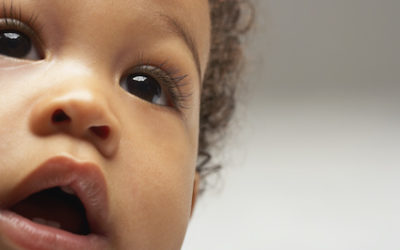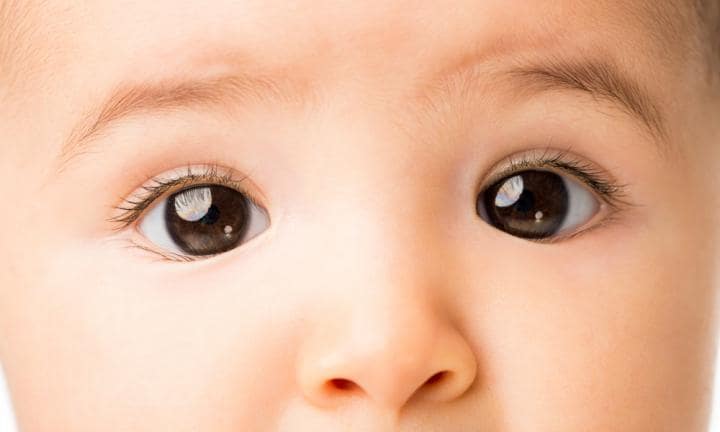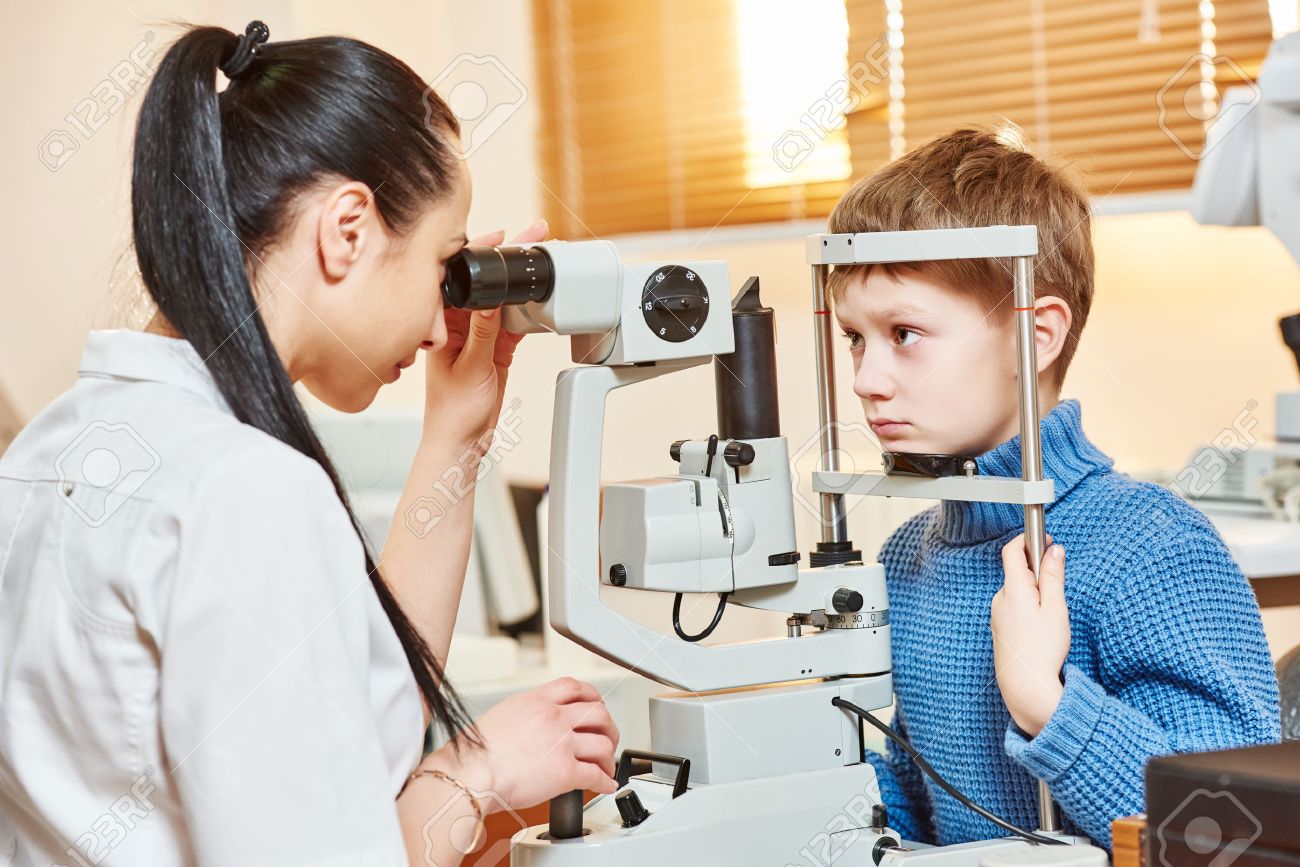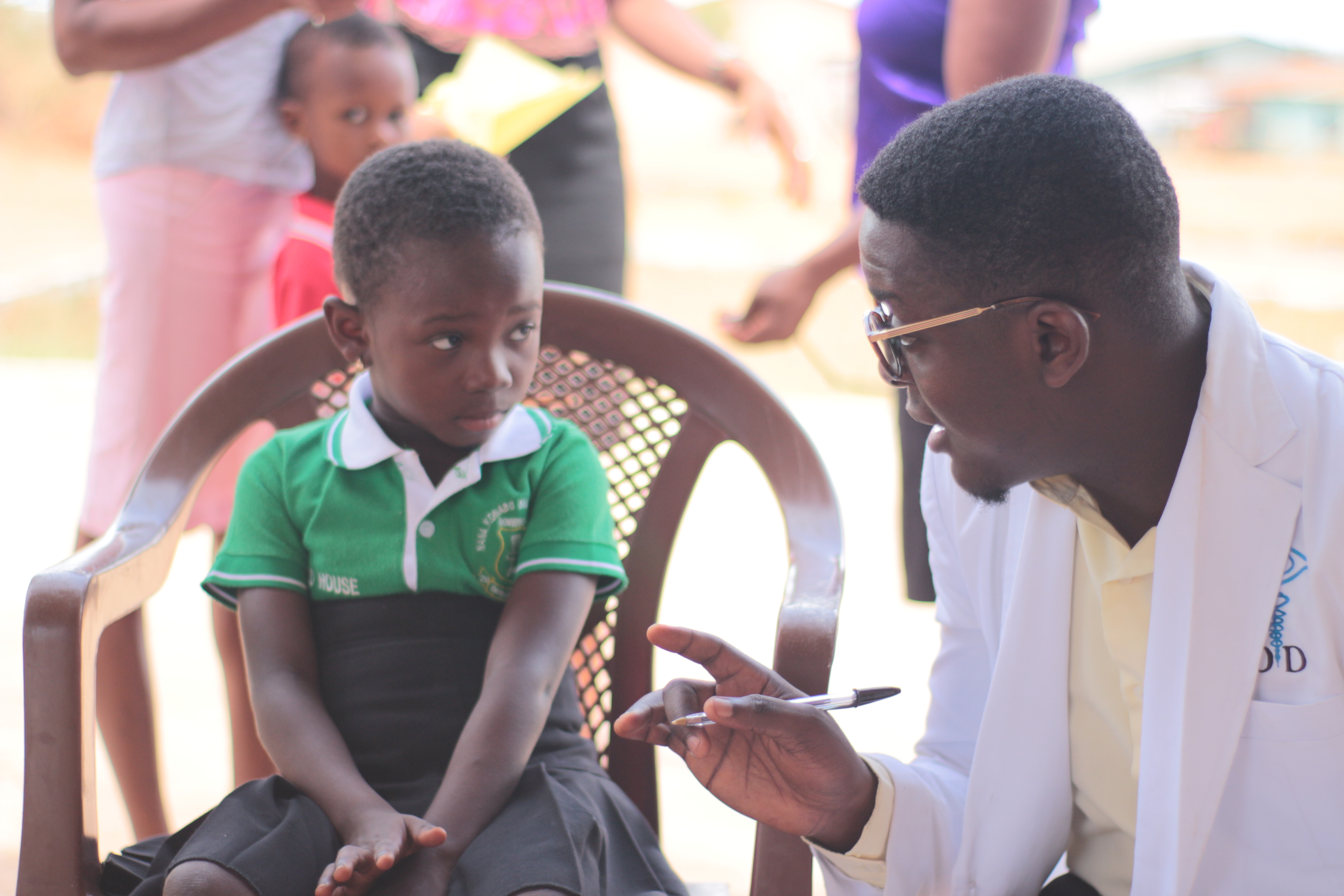https://cdn.steemitimages.com/DQmemWyafxoa6CVn7vZVcJVjby5ub667njhNyaESrNj6ZF3/Curious-baby-400x250.jpeg
A clear image of the world needs to fall on the retina and be transmitted to the visual cortex for mature vision to form in the brain of young children especially during a sensitive period of visual development, which historically has been thought to be the first 7 years of life (von Noorden GK, et al., 1979).

[source](https://www.mana.md/your-childs-eyes/) Amblyopia, according to the National Eye Institute (2013), is a condition resulting in poor vision in an otherwise healthy eye due to unequal or abnormal visual input while the brain is developing in infancy and childhood. Amblyopia literally means "dullness of vision" (from the Greek amblyos—dull; opia, from the stem ops—vision). The condition is sometimes called “lazy eye.”

[source](https://www.naijatica.com/news/2018/08/09/here-are-reasons-why-your-childs-eyes-need-early-attention/) Amblyopia is a leading cause of vision impairment in children. The condition affects as many as three percent of children in the United States (National Eye Institute, 2013) and carries a projected lifetime risk of visual loss of at least 1.2 percent (Webber AL and Wood J, 2005). The vision loss ranges from mild (worse than 6/7.5) to severe (legal blindness, 6/60 or worse). Notwithstanding, other monocular visual functions are also affected, including grating acuity, vernier acuity and contrast sensitivity (Webber AL and Wood J, 2005). “Lazy Eye” has been reported to be more common in left eyes than right eyes (Repka MX, et.al., 2010) and affects both near and distance visual acuity equally (Christoff A, et al., 2011). Thus, although generally unilateral, amblyopia may affect both eyes. Early recognition and prompt treatments are very crucial.

[source](https://qlearning.com/an-emotionally-intelligent-response-to-brexit/) **CLASSIFICATION/TYPES** i. Refractive Amblyopia, which consists of two types: • Anisometropic amblyopia – a unilateral amblyopia caused by a distinct refractive error of each eye. • Isoametropic amblyopia – a bilateral amblyopia that occurs from a significant yet similar refractive error from both eyes. Thus, the severity of the refractive error and amblyopia are directly related. ii. Strabismic amblyopia, which results from suppression of the deviating eye. Notably, constant strabismus leads to more severe amblyopia than intermittent strabismus. iii. Deprivation amblyopia, which develops when the visual axis is obstructed. This is the least common and most severe form of amblyopia. iv. Reverse amblyopia, which occurs as a result of penalization of the sound eye with patching or atropine during amblyopia treatment of the original amblyopic eye.

[souce](https://www.kidspot.com.au/health/infections-and-diseases/ear-and-eye/when-your-babys-eye-wanders/news-story/f358ca41e4a93c668ffb9ad5274d60cd) **SIGNS AND SYMPTOMS** Amblyopia of one eye (as in anisometropic and strabismic amblyopia) usually produces little handicap and few symptoms because the patient typically has good visual acuity in the normal eye. Some signs and symptoms that indicate a possible problem include: • Decreased vision in one or both eyes • Misaligned eyes (mostly one eye turned inward) • Head tilting • Squinting • Poor depth perception

[souce](https://www.123rf.com/photo_37724737_optometry-concept-female-optometrist-optician-doctor-examines-eyesight-of-child-boy-in-eye-ophthalmo.html) **TREATMENT** The treatment of amblyopia generally involves correction of the underlying predisposing condition followed by a period of deprivation of the dominant eye to promote normal visual experiences for the amblyopic eye. The younger the child when treatment commences, the more rapid the response to treatment and the better the visual outcome. See your Optometrist or Ophthalmologist for best treatment methods or recommendations.

**REFERENCES** *Abolfotouh MA, Badawi I, Faheem Y (1994), Prevalence of amblyopia among schoolboys in Abha city, Asir Region, Saudi Arabia. J Egypt Public Health Assoc 69(1-2): 19-30.* *Aldebasi YH (2015), Prevalence of amblyopia in primary school children in Qassim province, Kingdom of Saudi Arabia. Middle East Afr J Ophthalmol 22(1): 86-91.* *Anjaneyulu K, Reddy GN (2015), Prevalence of Amblyopia in Children Aged from 5-15 Years in Rural Population Kurnool Dist. Andhra Pradesh, India. International Journal of Science and Research 4(2): 99-100.* *Atkinson J, Braddick O, Anker S, Ehrlich D, King J, Watson P, Moore A (1996), Two infant vision screening programmes: prediction and prevention of strabismus and amblyopia from photo- and video-refractive screening. Eye; 10: 189-198.*

Originally posted here: https://steemit.com/steemstem/@bettervision/4qx1jy-amblyopia






No comments:
Post a Comment